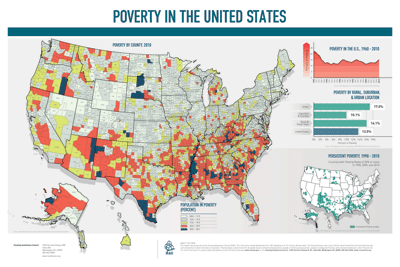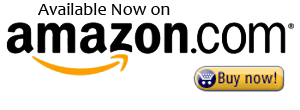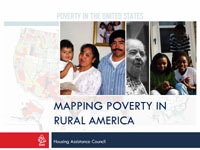HAC News: July 11, 2012
HAC News Formats. pdf
July 11, 2012
Vol. 41, No. 14
• Ag spending bill up next • House committee considering Farm Bill • Reserve account regulation revised for new USDA multifamily developments • USDA RD rule confirms annual fees for Section 502 guarantees • CFPB requests public comment about reverse mortgages • CFPB study on reverse mortgages identifies risks to consumers • Data access could help USDA monitor Rental Assistance payments, GAO says • Report highlights uses of American Community Survey data • Guide describes programs of Administration for Children and Families • HAC provides more rural poverty resources • SAVE THE DATE! 2012 National Rural Housing Conference! Promises to Keep in Challenging Times
July 11, 2012
Vol. 41, No. 14
AG SPENDING BILL UP NEXT. Following a July 4 recess at home, the House may take up 2013 appropriations for USDA soon. Rep. Jeff Fortenberry (R-NE) is expected to offer an amendment to keep growing rural communities eligible for RD housing programs. Similar amendments passed in the Senate as part of the Farm Bill in June and its USDA appropriations bill in April. There will be a continuing resolution to begin FY13 on October 1, 2012. Final budget decisions for 2013 will come in a post-election session, or in the new Congress next year.
HOUSE COMMITTEE CONSIDERING FARM BILL. The House Agriculture Committee began marking up its Farm Bill on July 11. The bill differs from S. 3240, approved by the Senate, and does not include housing provisions.
RESERVE ACCOUNT REGULATION REVISED FOR NEW USDA MULTIFAMILY DEVELOPMENTS. A final rule published in the Federal Register, 7/9/12, applies only to new construction Section 515 or 514/516 properties. Their reserve account deposits must be based on life-cycle analyses or Capital Needs Assessments prepared by third parties, rather than on the total development cost, as required in the past. Contact Michael Steininger, RD, 202-720-1610.
USDA RD RULE CONFIRMS ANNUAL FEES FOR SECTION 502 GUARANTEES. Implementing a provision of USDA’s FY12 appropriations act, a final regulation in the Federal Register, 7/11/12, enables RD to charge an annual fee as well as an up-front guarantee fee, in order to make the program self-supporting (see HAC News, 11/1/11). The fee amount will be announced each fiscal year. Contact an RD office or Cathy Glover, RD, 202-720-1460.
CFPB REQUESTS PUBLIC COMMENT ABOUT REVERSE MORTGAGES. The Consumer Financial Protection Bureau, which regulates reverse mortgage transactions, seeks “detailed information from the public on the factors that influence reverse mortgage consumers’ decision-making, consumers’ use of reverse mortgage loan proceeds, longer-term consumer outcomes of a decision to obtain a reverse mortgage, and differences in market dynamics and business practices among the broker, correspondent, and retail channels for reverse mortgages.” Comments are due August 31. Contact Monica Jackson, CFPB, 202-435-7275.
CFPB STUDY ON REVERSE MORTGAGES IDENTIFIES RISKS TO CONSUMERS. In a report required by Congress, the Consumer Financial Protection Bureau surveys the reverse mortgage market, identifies consumer protection concerns, and describes new challenges. It concludes that reverse mortgages are complex and hard for consumers to understand, misleading advertising and other scams occur, and the currently available consumer counseling may not be sufficient. It identifies roles for itself including regulation, education, and complaint resolution. Complaints on reverse mortgages can be submitted through CFPB’s website or by phone, 1-855-411-CFPB (2372).
DATA ACCESS COULD HELP USDA MONITOR RENTAL ASSISTANCE PAYMENTS, GAO SAYS. To identify RA payment errors due to unreported tenant income, legislation is needed to allow USDA to match tenant data with federal income data collected by other departments, according to a new GAO report, Rural Housing Service: Efforts to Identify and Reduce Improper Rental Assistance Payments Could Be Enhanced (GAO-12-624). GAO also suggests internal improvements that do not require legislation. For print copies, contact GAO, 866-801-7077 (toll free).
REPORT HIGHLIGHTS USES OF AMERICAN COMMUNITY SURVEY DATA. The Census Project compiled “Eliminating America’s Playbook,” a collection of case studies and comments from a range of organizations about the ACS’s importance to both government and business. The House voted in May to eliminate ACS funding from the Commerce Department’s FY13 appropriations bill (see HAC News, 5/16/12); the Senate has not yet voted on its bill.
GUIDE DESCRIBES PROGRAMS OF ADMINISTRATION FOR CHILDREN AND FAMILIES. ACF is part of the federal Department of Health and Human Services. It offers Assets for Opportunity IDA grants and resources for economic development, health care, refugee assistance, and other needs. Its program guide also includes basics for those new to requesting federal funding from any agency as well as links to capacity building resources.
HAC PROVIDES MORE RURAL POVERTY RESOURCES. In addition to its decennial rural poverty map (see HAC News, 6/27/12) HAC has issued a Rural Research Note on “Poverty in Rural America” and posted a recording of a recent webinar on the subject.
|
SAVE THE DATE! 2012 NATIONAL RURAL HOUSING CONFERENCE! |








